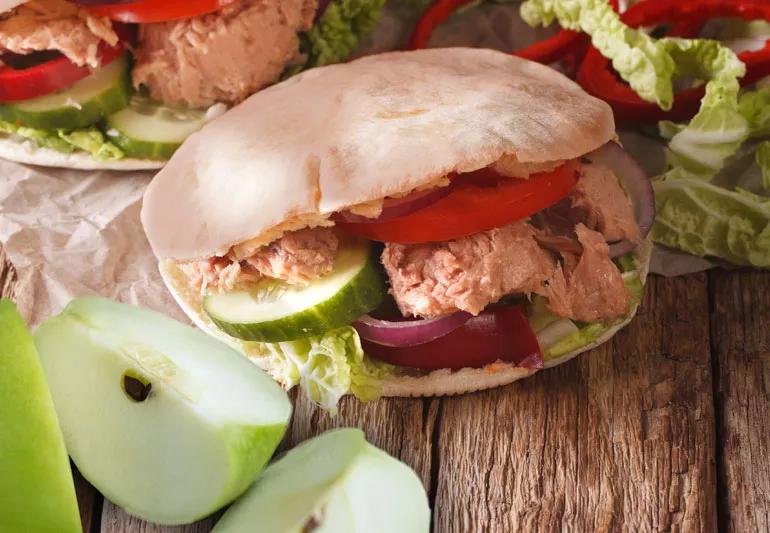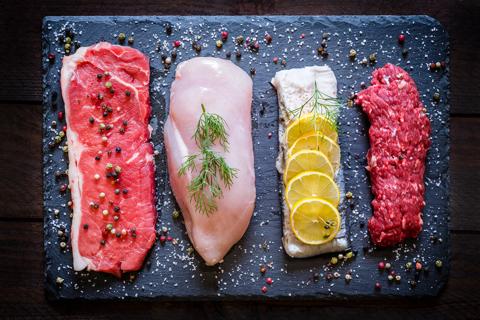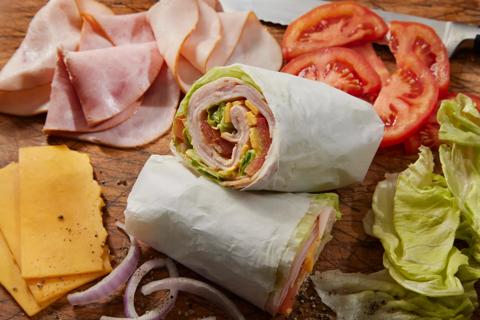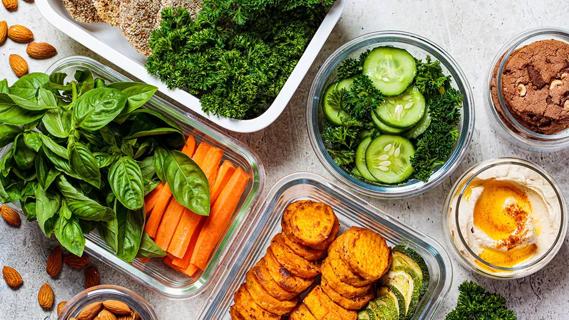Plus 6 ways a heart dietitian can help you

Perhaps diabetes or hypertension have raised your risk of heart disease. Or you simply want to eat in a more heart-healthy way. A three-day meal plan can help you get started. This 1,800-calorie plan is best for men who want to maintain their weight, says Julia Zumpano, RD, LD. (Discover the six benefits of seeing a heart dietitian below.)
Advertisement
Cleveland Clinic is a non-profit academic medical center. Advertising on our site helps support our mission. We do not endorse non-Cleveland Clinic products or services. Policy
Breakfast: ½ cup plain instant oatmeal, 1 cup low-fat milk, ½ banana, ¼ cup chopped walnuts.
Lunch: 2 slices whole wheat bread, 4 oz. low-sodium turkey meat, 1 slice low-fat Swiss cheese, ½ medium tomato, 1 Tbsp. yellow mustard, ¼ cup shredded lettuce; 6 baby carrots; 6 oz. plain, fat-free Greek yogurt with ¾ cup blueberries.
Dinner: 6 ounces baked chicken breast, 1 cup brown rice, 1 cup steamed broccoli, 2 Tbsp. margarine.
Snack: 1 low-fat string cheese stick, 2 clementines.
Breakfast: 1 egg, 1 whole wheat English muffin, 1 slice part-skim milk cheese, 2 oz. ham or turkey sausage; 1 cup fruit.
Lunch: 1 large whole wheat pita, 4 oz. canned light tuna in water, 1 Tbsp. light mayo, 2 slices tomato, ¼ cup lettuce; 1 cup low-fat milk; 1 medium apple; 2 cups spinach, 1 tsp. olive oil, 1 Tbsp. balsamic vinegar.
Dinner: (Salad) 6 oz. salmon, 2-1/2 cups raw baby spinach, ½ cup blueberries, ¼ cup sliced almonds, ¼ cup feta cheese, 2 Tbsp. lite balsamic vinaigrette.
Snack: 15 small whole wheat crackers, 3 Tbsp. hummus.
Breakfast: (Omelet) 1 egg or ¼ cup egg substitute, ½ cup spinach, 1 Tbsp. chopped onion, 1 Tbsp. chopped red pepper; 1 slice toast with 1 tsp. olive oil; 1 cup 1% milk; 1 orange.
Advertisement
Lunch: 4 ounces low-sodium ham, 1 slice part-skim milk cheese, 2 slices whole wheat bread, 2 tsp. mayo, 3 spinach leaves, 2 slices tomato; 6 baby carrots; 1 small pear.
Dinner: 2 oz. whole wheat spaghetti, ½ cup marinara sauce, 3 meatballs (lean beef or turkey), ¼ cup Parmesan cheese; 1 cup lettuce, 2 Tbsp. reduced fat salad dressing; ½ cup unsweetened applesauce.
Snack: 6 oz. light strawberry-flavored Greek yogurt, 28 pretzel sticks.
When you have high blood pressure, diabetes or excess weight, your doctor may refer you to a heart dietitian.
“Our goal is to reduce your cardiac risk,” explains Zumpano. “We try to get you started and educate you so that you’re empowered to make ‘good’ versus ‘bad’ food choices.”
When you see a heart dietitian, you will learn how to:
1.Distinguish nutrient-dense foods from empty-calorie foods.
2. Choose healthy versus unhealthy fats.
3. Tell healthy carbs from unhealthy carbs.
Advertisement
4. Eat at home more often.
5. Get a handle on your snacking.
6. Reduce the salt in your diet.
“We can show you how to make changes in the way you eat so that you can follow a heart-healthy diet and not even have to think about it,” says Zumpano.
Advertisement
Advertisement
Learn more about our editorial process.
Advertisement

With a focus on internal cues for hunger and fullness, this eating style may revolutionize your relationship with food

Review the ingredients, watch for sugar and fat, and choose one with the right amount of protein for your needs

A typical recommended balanced diet is half fruits and veggies, a quarter protein and a quarter grains

Foods high in protein, fiber and water can help keep hunger at bay

This quirky food trend is harmless, as long as you’re getting enough protein, fiber and healthy fats

This vital nutrient helps your brain and body in many ways — and most of us need more of it

Wrapped or sandwiched, try to choose fillings and condiments that are minimally processed, low in saturated fat and high in fiber

Set yourself up for success by carefully choosing your recipes, storage containers and prepping day

Start having sex about 72 hours before ovulation, then at least every other day during your fertile window

Attachment theory suggests that your earliest relationships shape connections throughout your life

It isn’t a recognized mental health disorder, but research shows that problematic social media use can negatively affect your mental health, self-esteem and sleep